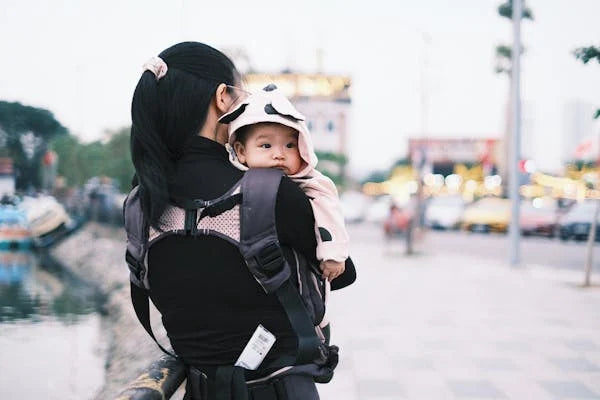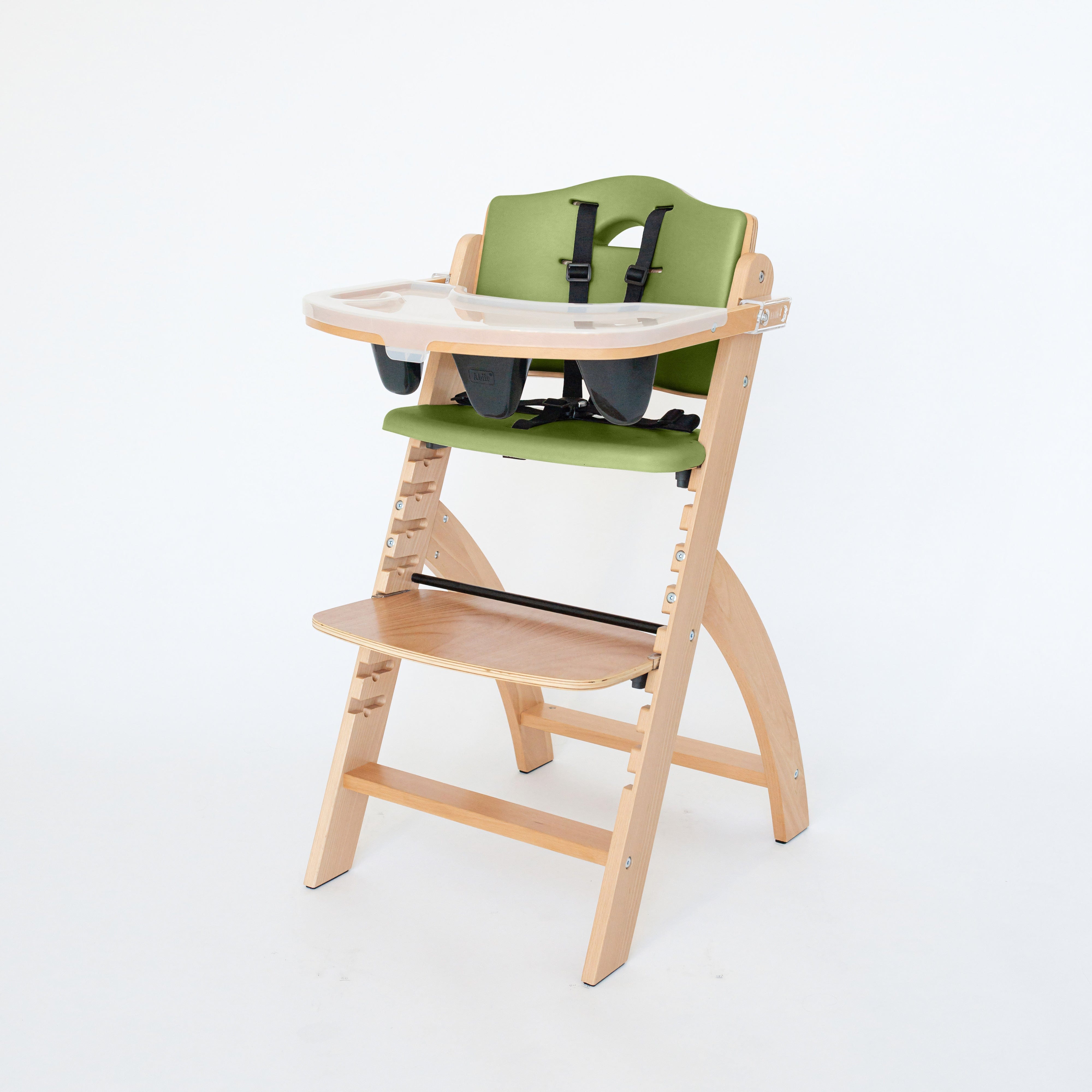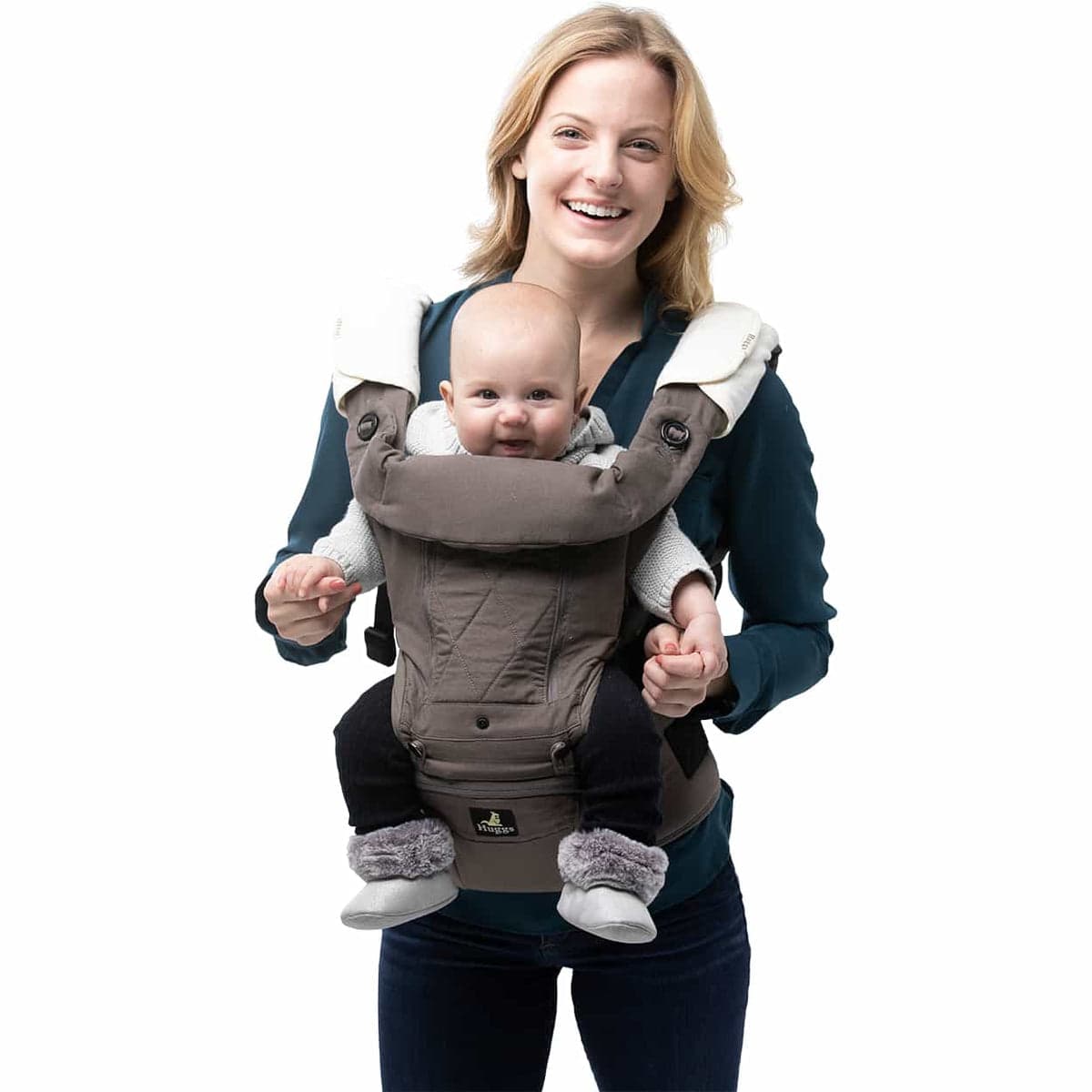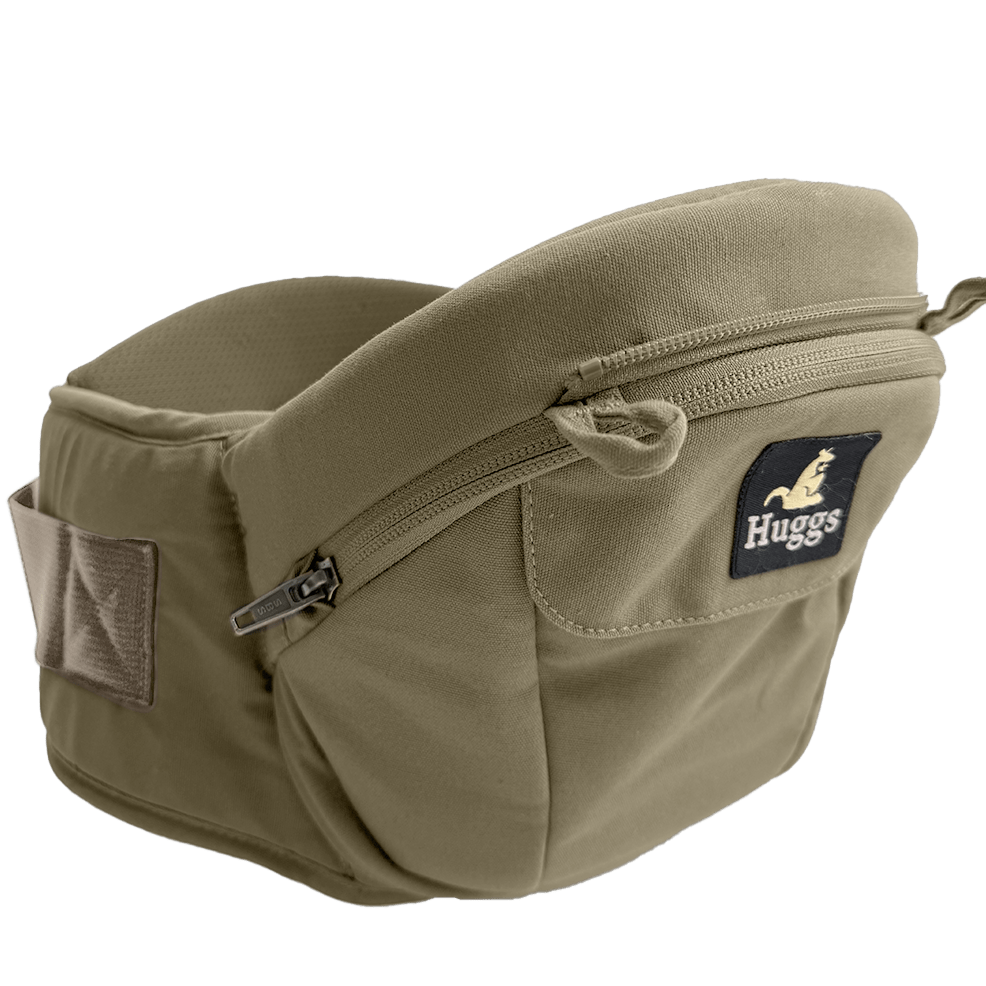7 Tips for Babywearing in Winter

Babywearing is a great way to bond with your baby. Not only is it easier to engage with your kid, but studies show that babywearing can also help reduce crying spells, reflux symptoms, and the risk for flat head syndrome.
But even with all the benefits of babywearing, some parents may think twice about doing it in wintertime because of the harsh weather. While this concern is understandable, following these tips should make babywearing in cold weather a comfortable and memorable experience.

-
Choose the Right Baby Carrier
If it’s your first time to go babywearing in winter, opt for a baby hip carrier made of warm materials such as wool, cashmere, or double/hollow-weave cotton. Apart from your body, the carrier itself will provide additional heat, so it’s important to choose a winter-friendly infant hip seat for your child.
-
Keep Your Baby Warm — But Not Too Warm
The general rule is to dress your baby in one more layer than what you’re wearing. Wearing additional clothes won’t make your baby comfortable; instead, it can make them overheat. After all, you’re going to wear them over your carrier, which is considered one layer — and your body, which is another heat-generating layer.
When babywearing in winter, layering is crucial as you can always add or remove garments as needed. Once you’re back indoors, you will only need to remove one garment instead of several.
Your baby’s basic wear should include at least a long-sleeved bodysuit or a romper suit. Depending on the weather, they may need a jacket or jumper.
Any exposed part of your baby’s body should be covered as well. Remember: heat can quickly escape your baby’s head and feet, so be sure to put on their hat, ear muffs, mittens, and/or socks/fur slippers. For best results, choose products that are made of warm, organic materials such as wool.
Reminder 1 for babywearing in cold weather: Check your baby’s temperature regularly by feeling their neck or feet. If any of these parts feel cold, then your baby requires another layer. If they feel sweaty or wet, it means you need to remove their topmost garment.

-
Wear Your Baby Inside Your Coat
Donning your kid inside your coat is the best babywearing method in winter, especially for younger babies.
If you have the budget to buy a babywearing coat, go for it. It’s a good investment, and it comes with many features you won’t find in a regular winter coat, such as detachable panels.
That said, an oversized coat will also work for babywearing.
Whatever coat you choose for babywearing in winter, make sure your baby is donning a ‘normal’ layer of clothes, as you don’t want them to overheat. But if your toddler wants to keep their arms out, then you will need to put them in a jacket.
Keep your baby close so you can ‘heat’ them up with your body. This phenomenon is made possible by thermal synchrony, where the mother’s chest temperature increases to warm a cold baby and decreases to cool a warm baby.
When babywearing in cold weather, make sure that your baby’s head remains exposed — but covered with a fluffy hat. You should easily see their face when you glance down.
Reminder 2 for babywearing in winter: Always check your baby’s nose as your scarf or any other garment might end up covering their airway. Also, their nose should always be pointing up. If their chin is tucked towards their chest, they may be at risk of suffocating.
-
Use Snowsuits Appropriately
While a snowsuit is ideal if it’s freezing outside, it’s not the best option if you plan on babywearing your child in winter. For one, the puffy suit will make it harder to fit your baby in their carrier. Ideally, the straps should hug your baby’s body, not their clothing. Moreover, thick garments will make it more difficult for you to check their temperature.
-
Use a Winter Weather Cover
If you don’t have an oversized winter coat or prefer to wear your baby outside your coat, you may want to use a winter weather cover. It can keep your child warm and comfortable while you’re babywearing them in cold weather.
When choosing a weather cover for babywearing in winter, be sure to pick a style that has the following features:
- Suitable for front or back-facing baby carriers
- Removable and/or adjustable hood
- Adjustable foot area
- Easy to don/remove attachments
- Portable size

-
Wear Shoes With Good Traction
While this is not a tip about babywearing in winter per se, this reminder is something you should follow for safety. Make sure to wear shoes with good traction if you plan to babywear your kid outside. It can be slippery outside because of the snow and ice, so it pays to err on the side of caution.
-
Go Outside With Care
While the cold temperatures shouldn’t deter you from going out with your child, there are instances when you think twice about babywearing in cold weather. For example, if it’s -15 degrees Fahrenheit (-26.11 °C) outside, then you may want to skip your excursion as your baby will lose heat quicker than you do.
As a safety precaution, you should always check the wind speed and wind chill before you head out. Limit your outdoor trips to 15 minutes or less, and be sure to monitor your child for signs of cold, such as shivering, shaking, and grayish or reddish-colored skin.
Babywearing during wintertime might be tricky, but it’s doable. As long as you choose the right carrier, coat, and clothes for your little one, you can continue to enjoy your little walks and outings like you did in the previous seasons.

 US
US
 Canada
Canada
 Japan
Japan
 European Union
European Union
 Taiwan
Taiwan
 Malaysia
Malaysia
 Singapore
Singapore





